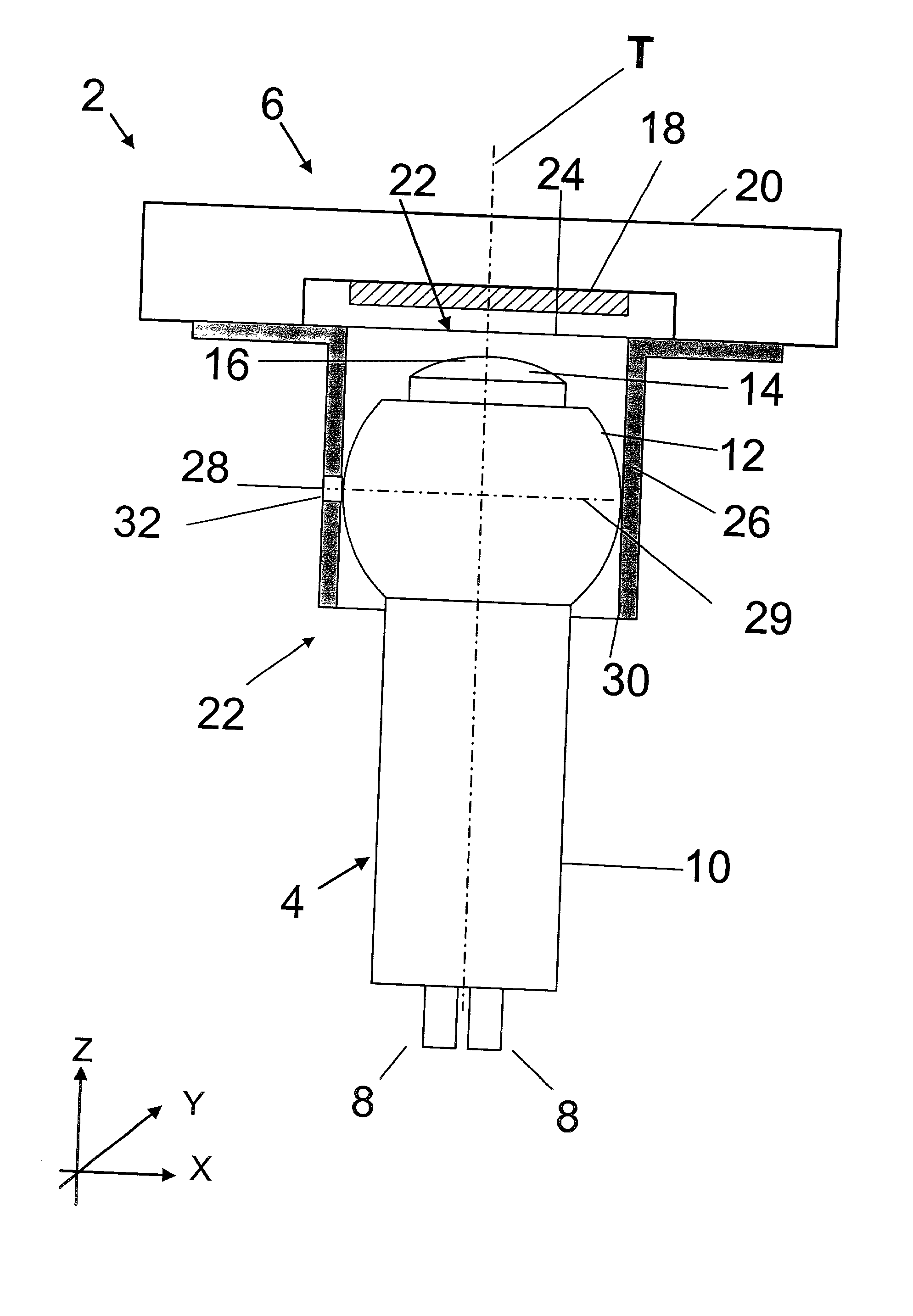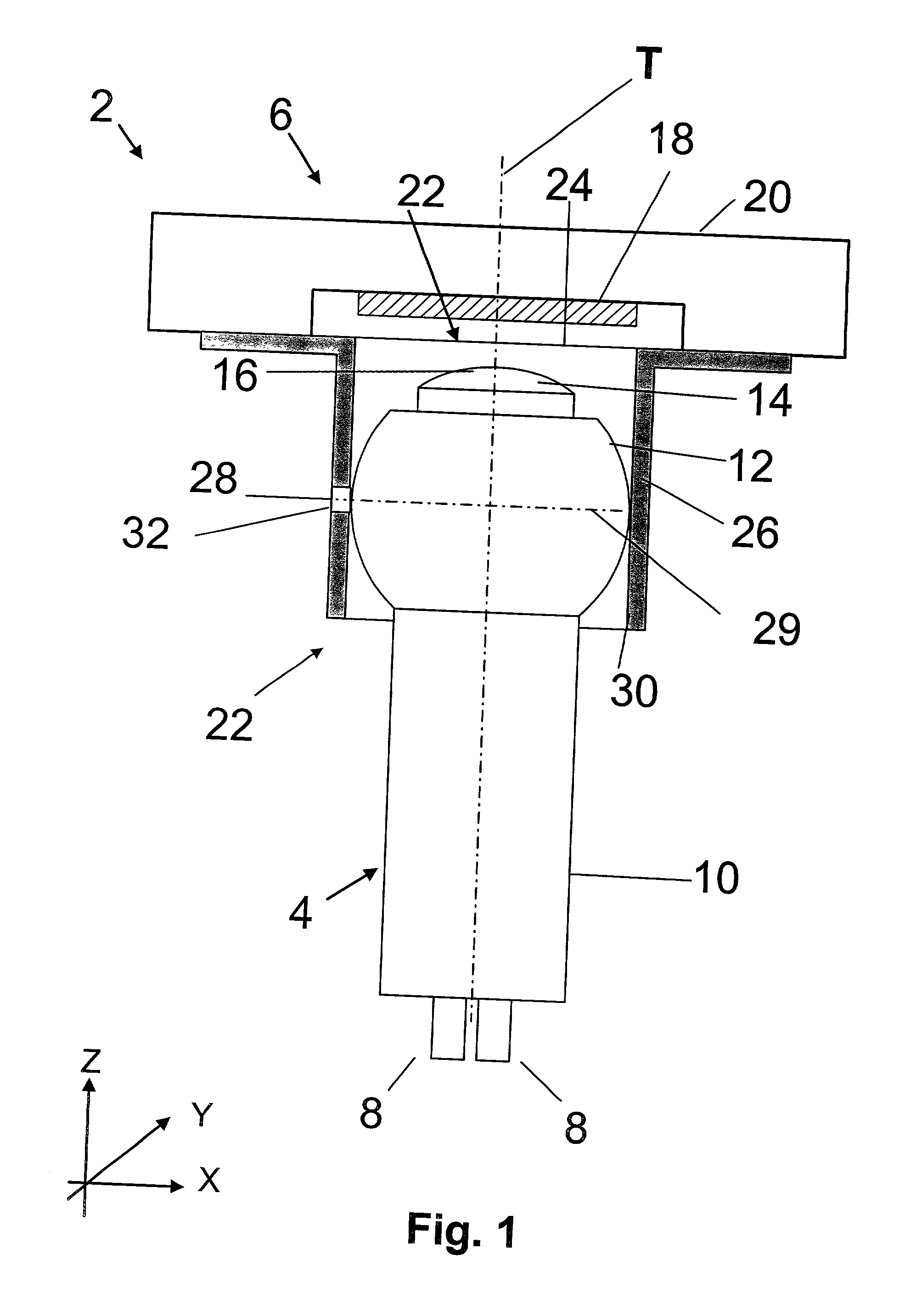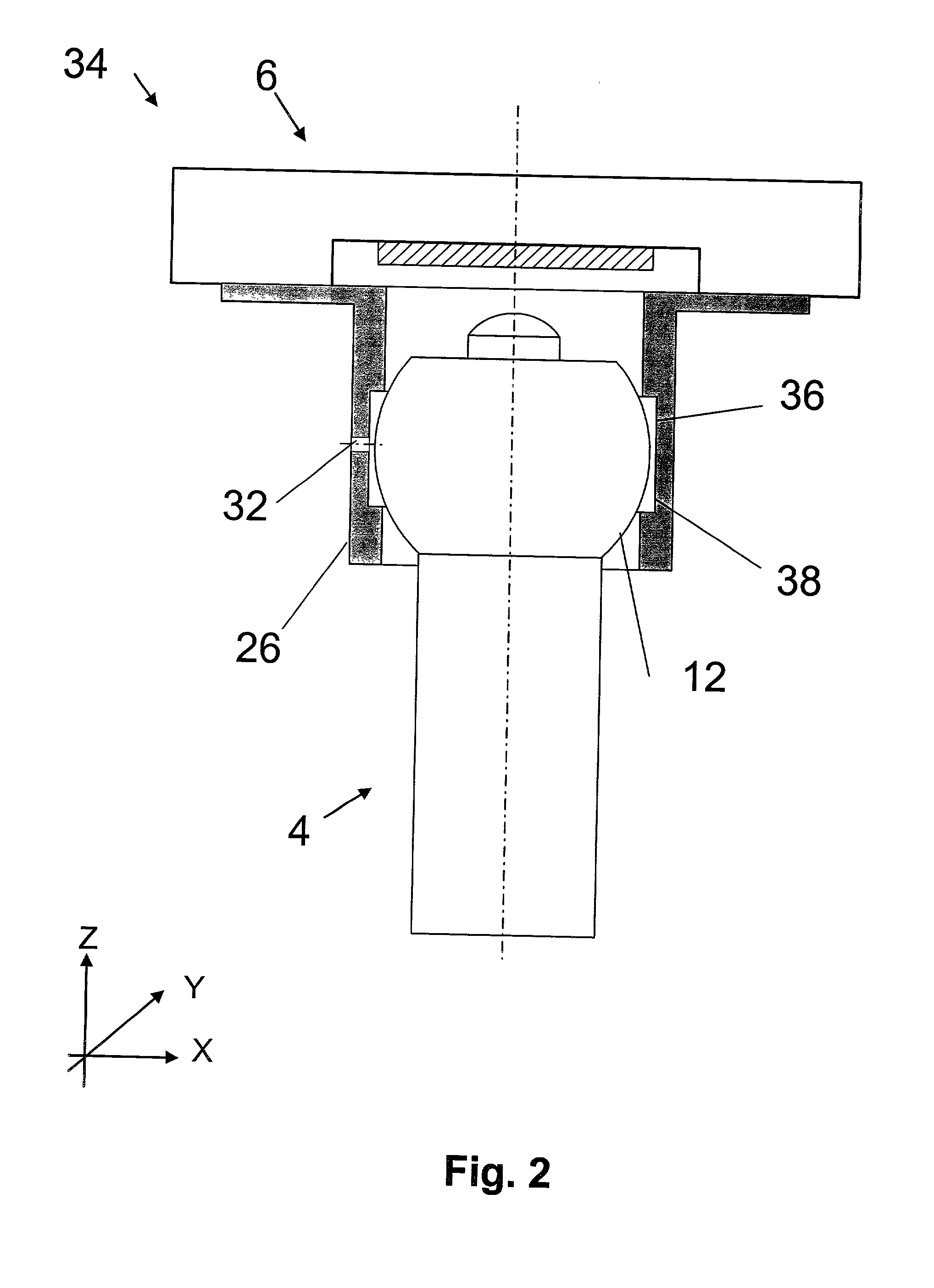Feature and method to align and assemble photonic components
- Summary
- Abstract
- Description
- Claims
- Application Information
AI Technical Summary
Benefits of technology
Problems solved by technology
Method used
Image
Examples
Embodiment Construction
[0032] While the description above provides a full and complete disclosure of the preferred embodiments of the present invention, various modifications, alternate constructions, and equivalents will be obvious to those with skill in the art. Thus the scope of the present invention is limited solely by the appended claims.
[0033] Referring now generally to the Figures and particularly to FIG. 1, a first preferred embodiment of the present invention, or photonic package 2. The photonic package 2 includes a first photonic component 4 and a second photonic component 6. The first photonic component 4 has an optical fiber 8 and a first housing 10 having a partially spherical surface 12. The partially spherical surface 12 is partially spherical and includes a first photonic opening 14. The first photonic opening 14 permits light to pass in and out of an endface 16 of the optical fiber 8. The second photonic component 6 has a MEMS optical mirror die 18, a second housing 20 and an access port...
PUM
 Login to View More
Login to View More Abstract
Description
Claims
Application Information
 Login to View More
Login to View More - R&D
- Intellectual Property
- Life Sciences
- Materials
- Tech Scout
- Unparalleled Data Quality
- Higher Quality Content
- 60% Fewer Hallucinations
Browse by: Latest US Patents, China's latest patents, Technical Efficacy Thesaurus, Application Domain, Technology Topic, Popular Technical Reports.
© 2025 PatSnap. All rights reserved.Legal|Privacy policy|Modern Slavery Act Transparency Statement|Sitemap|About US| Contact US: help@patsnap.com



